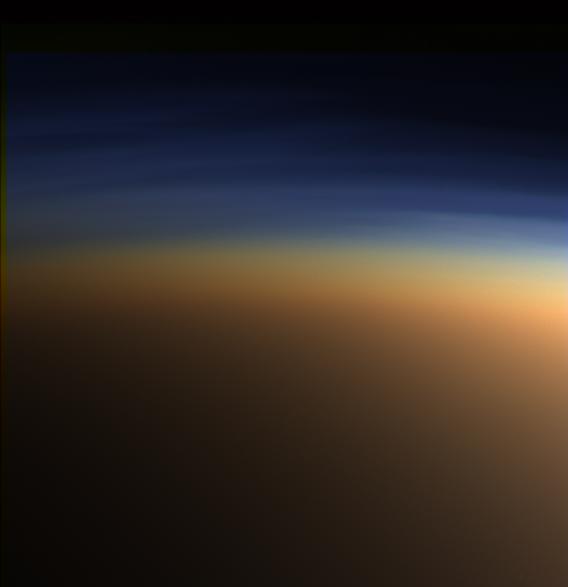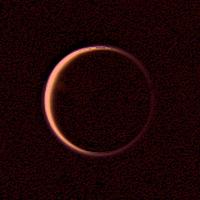atmosphere code. Is it flexible enough for Titan?? How
do we have to adjust the various parameters?
Let's go and play a bit! Here is the place to report
success
Of course, I played already, but I don't want to report
success, YET...
Bye Fridger
PS: Here is a summary of the meaning of the 6 new
atmosphere parameters that Chris gave in the
developer list:
Chris wrote:There are six new parameters for atmospheres:
Mie
A float value giving the fraction of light scattered per kilometer at the planet's surface ('sea level')
MieAsymmetry
Henyey-Greenstein phase function parameter for wavelength independent scattering. A floating point value between -1 and 1, with -1 indicating complete backscattering, 1 complete forward scattering, and 0 isotropy.
MieScaleHeight
Scale height for wavelength independent scattering particles. Height in kilometers at which wavelength independent scattering is 1/e of the value at the surface
Rayleigh
Wavelength dependent scattering coefficients. Three values giving fraction of red, green, and blue light scattered per kilometer at the planet's surface. To simulate Rayleigh scattering, they should be in ratios that fit the 1/wavelength^4 behavior, though this is not required.
RayleighScaleHeight
Scale height for wavelength dependent scattering. Currently ignored; MieScaleHeight is used for both Rayleigh and Mie scattering.
Absorption
Three values giving the fraction of red, green, and blue light absorbed per kilometer at the planet's surface.
I may introduce a separate scale height for absorption, though this extra flexibility will cost some performance.
There are lots of limitations with the current code because of the limited accuracy of the integration that is done per vertex. I'm working on this and on improving the performance.
Following are the values that I'm using for Earth right now. If you add them to the Atmosphere definition for Earth in solarsys.ssc, you'll be able to see the new rendering code in action:
# -------------------
Mie 0.001
MieAsymmetry -0.15
Rayleigh [ 0.001 0.0025 0.006 ]
Absorption [ 0 0 0 ]
MieScaleHeight 12
# --------------------
--Chris
Here is a set of parameters that e.g. I use for Earth
Code: Select all
Atmosphere {
Height 60
Lower [ 0.43 0.52 0.65 ]
Upper [ 0.16 0.37 0.74 ]
Sky [ 0.40 0.6 1.0 ]
Sunset [ 1.0 0.6 0.2 ]
Mie 0.0005
MieAsymmetry -0.15
Rayleigh [ 0.00025 0.0009 0.0015 ]
Absorption [ 0.00018 0.00005 0.0 ]
MieScaleHeight 18
CloudHeight 7
CloudSpeed 65
CloudMap "earth-clouds.dds"
}










